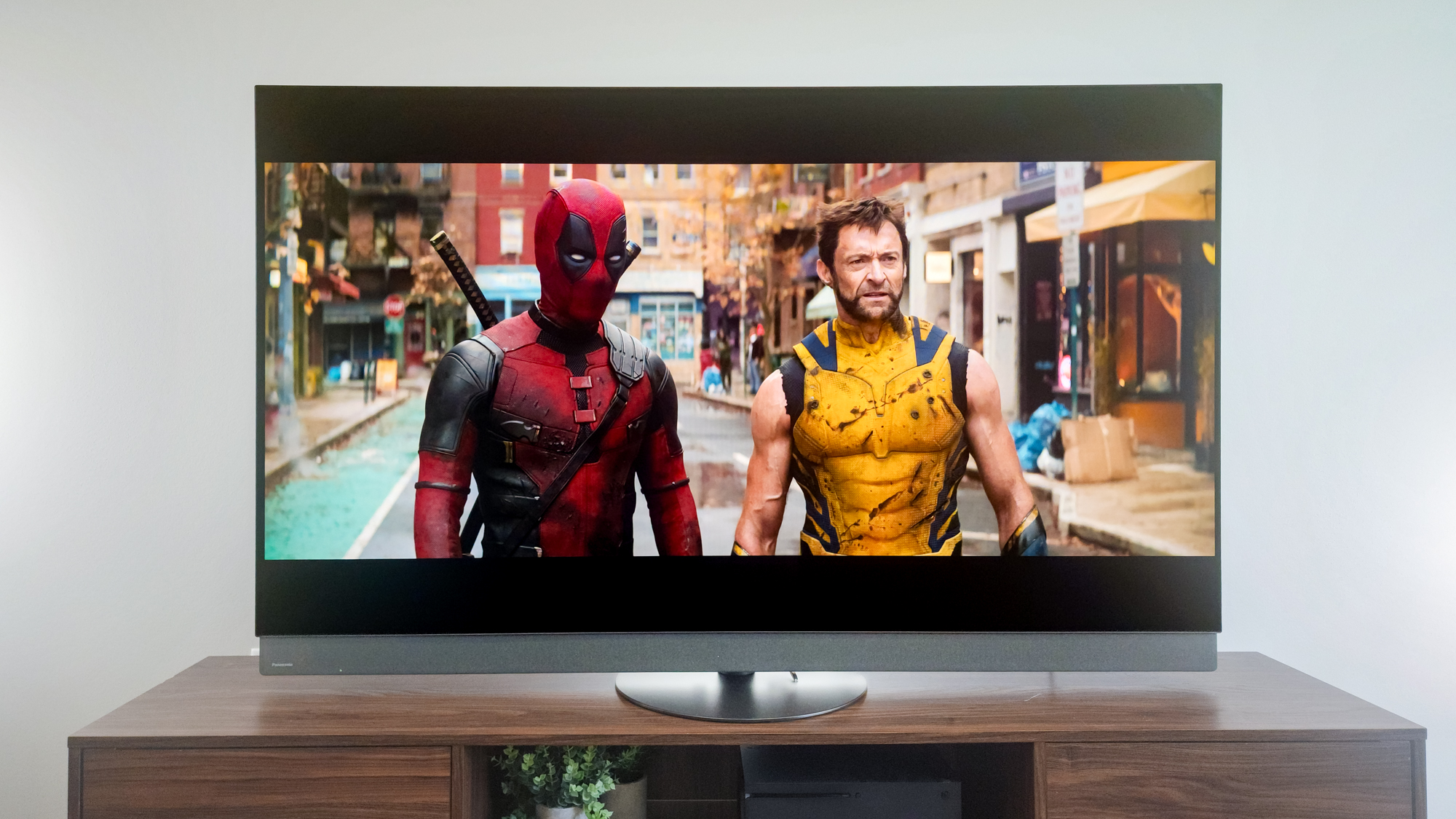Tom's Guide Verdict
Regardless of whether you’re driving with Mario, tromping through feudal history or battling extra-terrestrials for intergalactic supremacy, Acer’s Predator Connect T7 can help with a low latency design, all the goodies Wi-Fi 7 brings to the gaming party along with an extra layer of security. Too bad it comes up short on ports and Acer only sells onesies.
Pros
- +
Low latency design
- +
Easy automatic set up
- +
Trend Micro security included
- +
Good all-around performance with excellent range
- +
Useful gaming options with Killer Prioritization engine
Cons
- -
No discounts on multi-packs
- -
Only two downstream gigabit Ethernet ports
Why you can trust Tom's Guide
Wi-Fi Spec: BE11000
Number of Antennas/Removable: 6/No
Ports: 1 2.5 Gbps WAN/2 1 Gbps LAN, USB-C
Processor/Memory/Storage: Quad-core 1.5GHz/1GB/512MB
Wi-Fi chip: Qualcomm IPQ5322 and QCN 6274
802.11ax performance: 1.914 Gbps (at 15 feet)
Range: 115 feet
Size: 8.6 x 4.3 x 4.3 inches
Estimated Annual Electricity Cost: $32.80
If you’re looking to up your gaming experience without buying a new graphics-intensive rig, look to Acer’s Predator Connect T7 mesh router and node. While you’ll have to buy them one at a time and there’s a distinct port shortage, the Wi-Fi 7 mesh system makes the most out of a high-speed broadband connection to fill a home with instant gaming gratification. The design features low latency, Intel’s Killer Prioritization engine and one of the easiest and quickest set up routines around. In other words, you’ll be pounding the W-A-S-D keys in a few minutes.
By combining good overall performance with top range, the Predator T7 can be the family’s all-around high-performance router that’s as good at retrieving email and distributing 4K videos as making the online gaming experience more competitive. It falls short of being a top zombie killer, though, with only two wired networking ports that top out at a maximum speed of 1 Gbps and the system lacks software gamer gotta-haves like a Ping heat map and the ability to geofence a region.
Still, Acer’s Predator Connect T7 can provide a way to make online gaming faster and better. My Acer Predator Connect T7 review will help you decide if this is the best gaming router for your needs along with whether or not it’s also one of the best Wi-Fi 7 routers you can get right now.
Acer Predator Connect T7 review: Pricing and availability
The Predator Connect T7 mesh units are available individually on Acer’s site and on Amazon for $330 each. There’re no multipacks available in the U.S., but Acer is working on it. Unfortunately, this means that making a network from a trio of Predator T7s costs close to $1,000.
Each device can cover 3,000 square feet, according to Acer engineers. That adds up to mansion-sized coverage with three or more units.
Acer Predator Connect T7 review: Design
While other gaming routers strive for odd individualistic designs that focus on menacing otherworldly motifs, Acer designers have been more restrained with the Predator 7’s square monolithic towers. Available in black or white, they should be easy to hide at 8.6 x 4.3 x 4.3 inches.
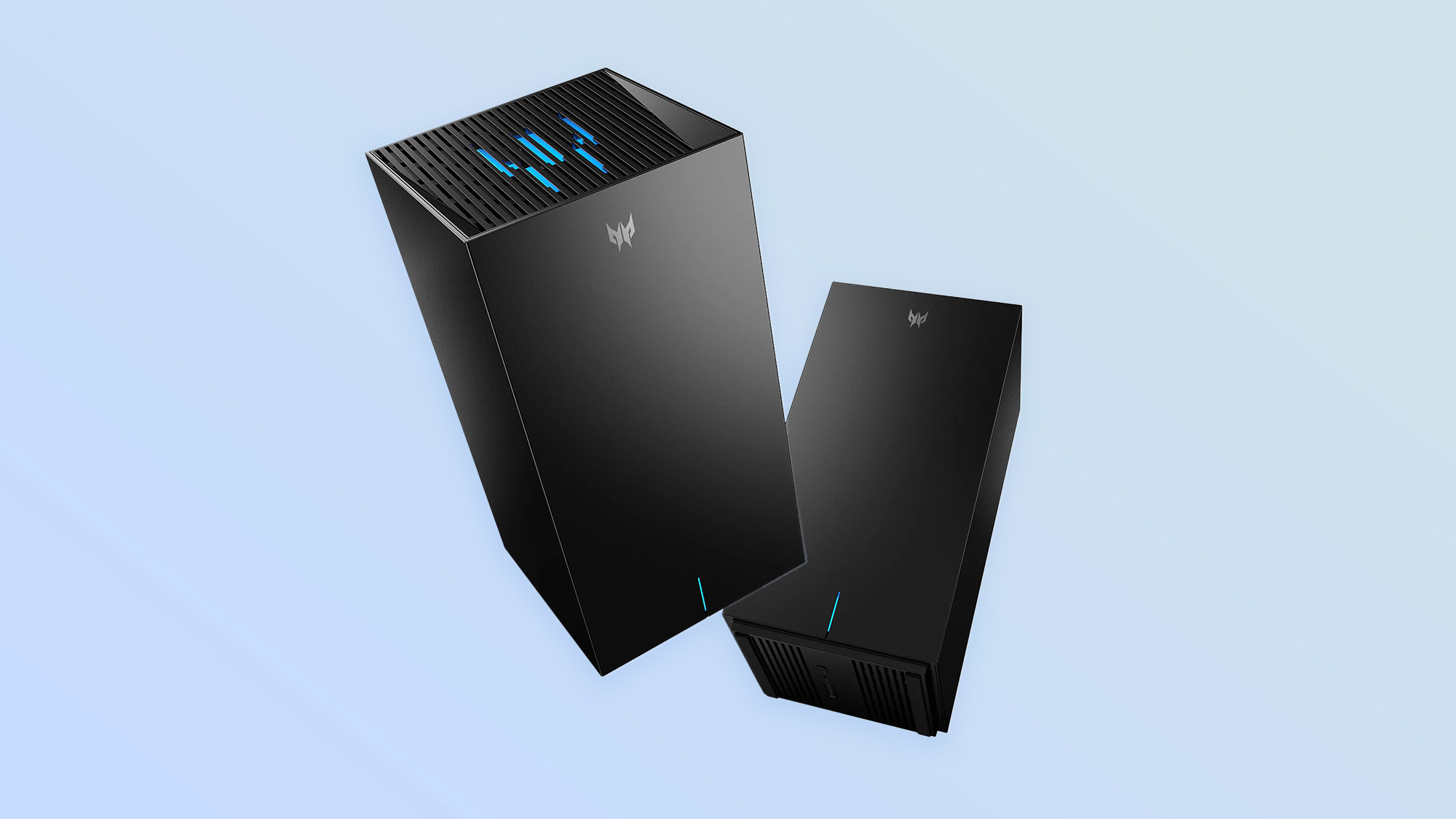
As you’ll see, the Predator T7’s bland looks may be deceiving, potentially making it the stealth router of the year. Its extensive venting on top is lit with the Predator logo and there’s a discrete light bar up front. It pulses bluish green when data is flowing smoothly and turns red when it’s offline.
Get instant access to breaking news, the hottest reviews, great deals and helpful tips.

Powered by Qualcomm’s IPQ5322 and QCN6724 chips, the tri-band Predator T7 plays a name game by calling the host router its “Controller” and the node its “Agent”. Either way, it yields 2X2 streaming across the 2.4GHz, 5.0GHz and 6GHz Wi-Fi bands, while others extract higher short range performance by doubling up on the 6GHz band with 4X4 streaming.
Able to take advantage of Multi-Link Operations (MLO), the Predator T7 uses 4K Quadrature Amplitude Modulation (QAM) and Acer’s hybrid Quality of Service (QOS) routine for picking who gets first dibs on the Internet connection’s data flow. It adds up to a potential streaming of up to a peak theoretical throughput of 10.662 Gbps. In other words, it should satisfy those with 1 Gbps data plans.
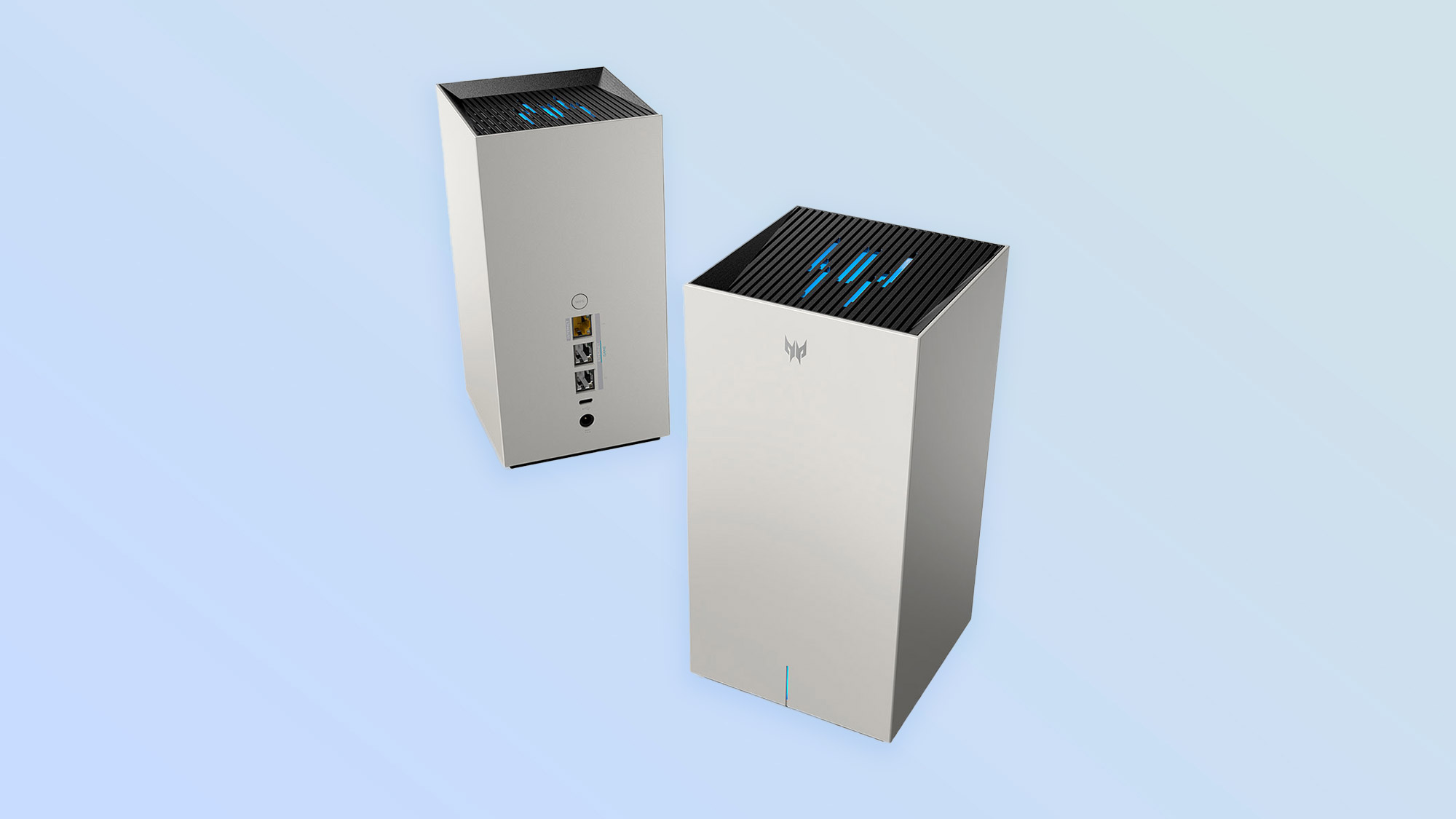
The device has a vertical array of six antennas arranged to deliver a spherical transmission pattern and a low latency design that yields short ping values. It uses Intel’s Killer Prioritization engine and Qualcomm’s packet allocation algorithm to streamline the data movement while taking stress off the processor during intense intervals.
A big bonus for consoles, like the PlayStation 5, Xbox, Switch 2 and Steam Deck, are the Predator T7’s port forwarding details. On the other hand, it lacks gaming router gotta-haves, like software accelerators as well as a ping heat map to show areas of fast and slow connections or gaming accelerators.
Its 2.5 Gbps broadband input is the ticket of entry to the gaming world these days, but it pales in comparison to those with 5 and 10 Gbps ports, like TP-Link’s Archer GE650 and Archer GE800. Plus, the Predator T7’s two downstream LAN ports are rated at 1 Gbps. In other words, it’s adequate but not impressive, although the port marked Gaming in green gets top dog priority of the data flow.
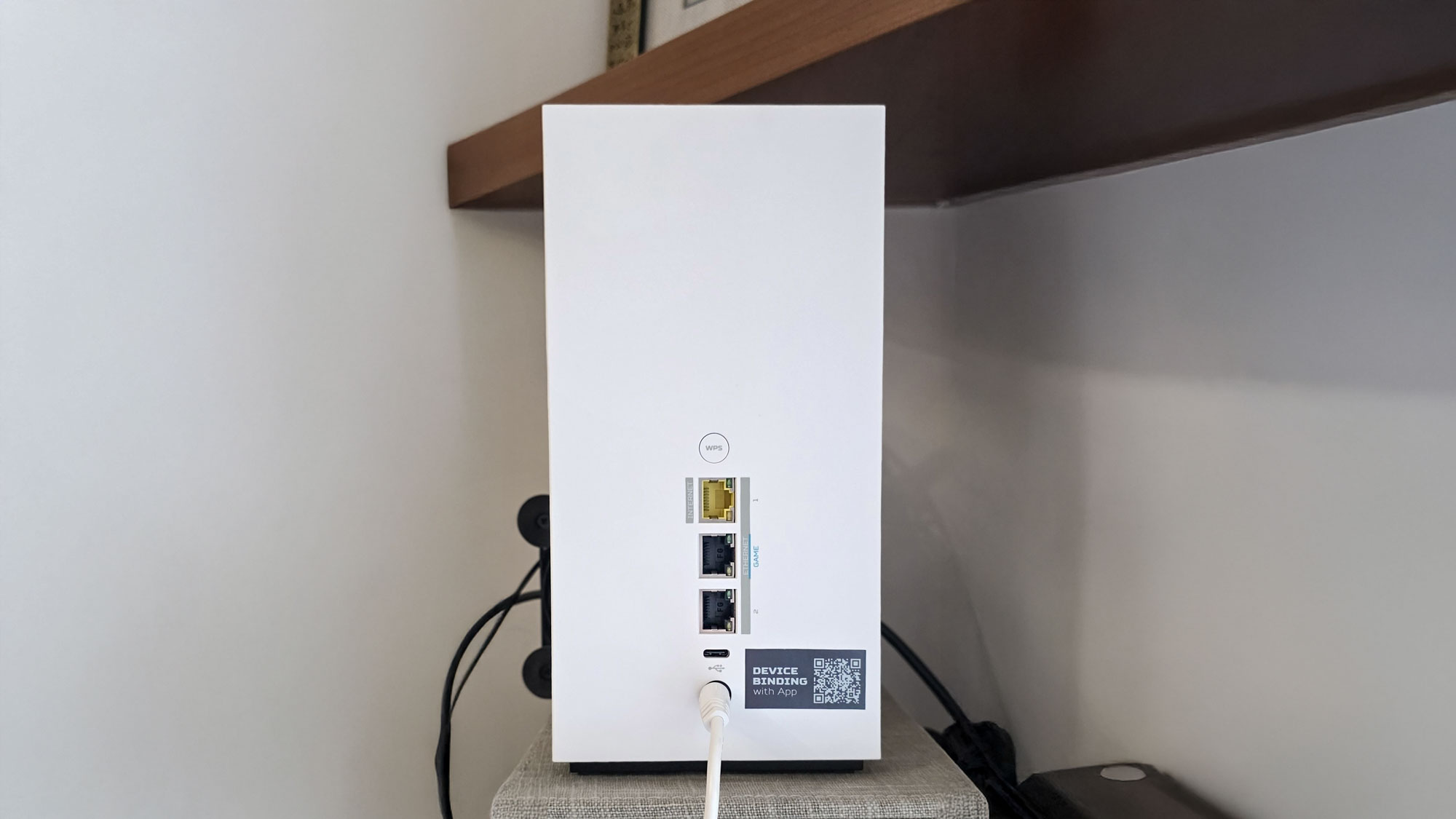
There’s a WPS button for quickie connections with new devices as well as a USB-C port on the back for connecting a data drive. However, it uses the USB 2.0 protocol for peak transfers of 480 Mbps.
In addition to a recessed reset key underneath, the Predator T7 has an On/Off switch. The network names, passwords and the administrative credentials are printed on a label underneath. Built-in router security software from Trend Micro rounds out the package with traffic monitoring for suspicious sources and data flow. Unlike others that charge an annual security fee, the router’s basic defenses are included with a lifetime of updates. It can be turned on with one tap of the app.
Acer Predator Connect T7 review: Performance and in use
With the two units I set up in my 3,500 square foot home, I flogged the Predator T7 daily for a variety of tasks. It didn’t quite reach the house’s periphery and a third unit would likely have done the trick for whole-house coverage.
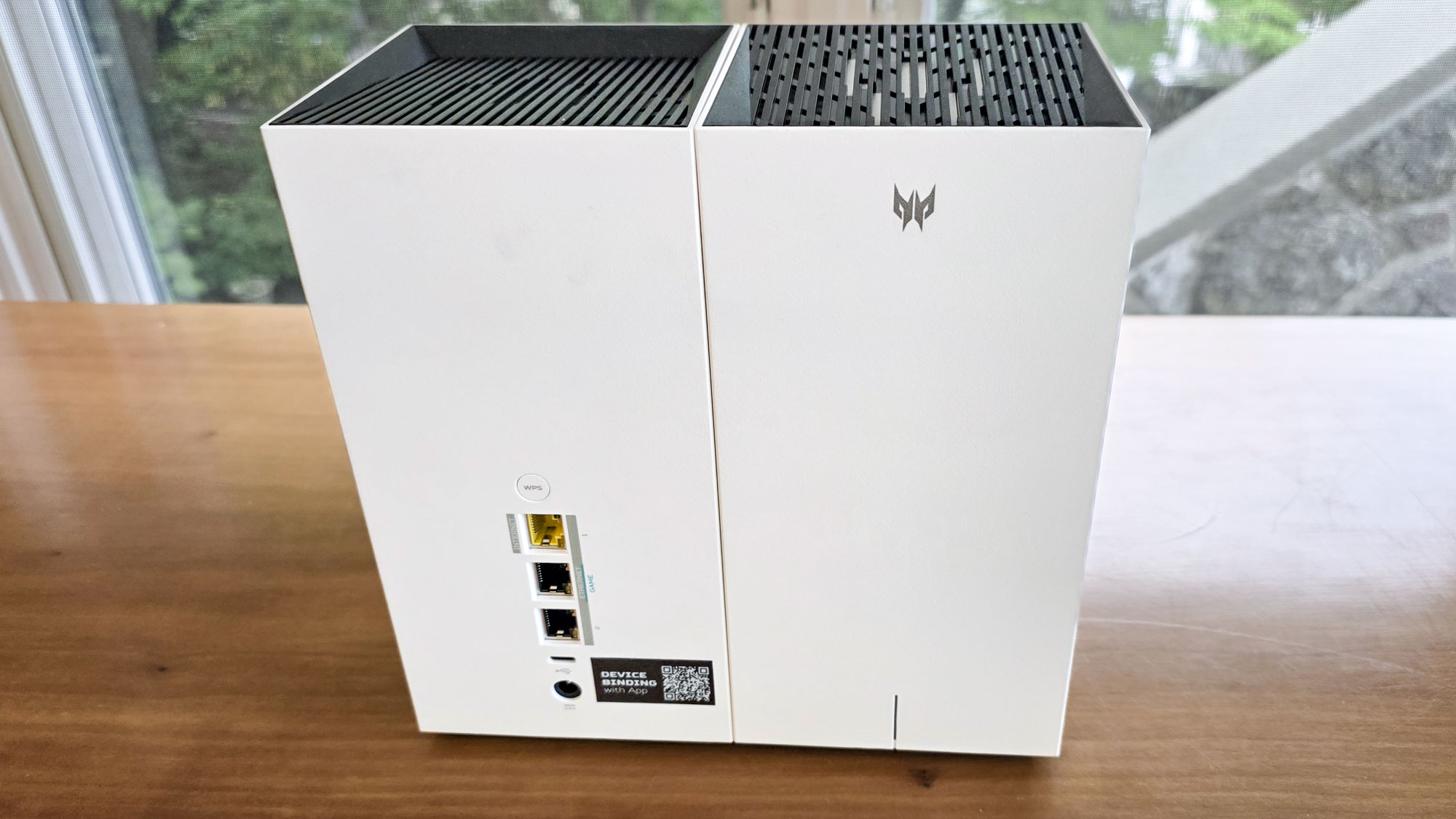
I used Keysight’s IxChariot networking benchmark set to simulate 10 data-hungry users and an Acer Swift Edge 16 notebook to gauge its performance. Zombies and aliens take note, the Predator T7 moved upwards of 2.165 Gbps close up and 1.914 Gbps at 15 feet. That’s well off the Asus ROG Rapture GT-AXE11000 at 2.956 Gbps and the Netgear Nighthawk RAXE500 at 2.396 Gbps, but they are high-performance traditional routers that cost at least twice as much.
Throughput | Acer Predator Connect T7 | Asus ROG Rapture GT6 | Asus ROG Rapture GT-AXE11000 | Netgear Nighthawk RAXE500 |
15 feet | 1.914 Gbps | 1.398 Gbps | 2.956 Gbps | 2.396 Gbps |
50 feet | 476.0 Mbps | 399.0 Mbps | 267.9 Mbps | 215.8 Mbps |
75 feet | 231.5 Mbps | 273.8 Mbps | 98.3 Mbps | 148.6 Mbps |
90 feet | 121.0 Mbps | 5.6 Mbps | -- | 18.9 Mbps |
With the host router (err, Controller) and test system 50 feet apart, a distance where many mesh systems lag, the throughput dropped to 476.0 Mbps. This easily led the pack, making the Predator T7 an excellent router for mid-sized abodes.
At 75 feet, the Predator T7 moved 231.5 Mbps, putting it in the middle between the faster Asus ROG Rapture GT6 (at 273.8 Mbps) but ahead of the ROG Rapture GT-AXE11000 (98.3 Mbps) and Netgear Nighthawk RAXE500 (148.6 Mbps).
It had a range of 115 feet versus between 85 and 95 feet for the others, making it the long distance champ. At 90 feet, it delivered 121.0 Mbps, when others were either offline or moving a few megabits a second.

When sending the Wi-Fi data signal across a 20 foot room and through a wall, the Predator T7 was a mediocre player at 654.9 Mbps. This should be plenty of throughput but lagged behind the ROG Rapture GT6’s 1.272 Gbps. Later, with the node (aka Agent) set up a floor above the host (Controller), the network pushed 517.1 Mbps to the test system 40 feet away. Again, it was well behind the GT6’s 771.8 Mbps.
Over two weeks of intensive daily use, the Predator T7 came through on emailing, downloading and streaming movies while I played games online and watched others play on Twitch. It stood up to several devices demanding data, such as when I tried to overload the network by playing 4K video on an Acer Swift Edge 16, while I was using a MacBook Air to stream the BBC World Service’s news feed and my Samsung Galaxy Book was playing Spotify music. All this was happening while my HP Dragonfly system was moving data onto and off my network RAID server. All the items came through without a hiccup, lost frame or freeze up.
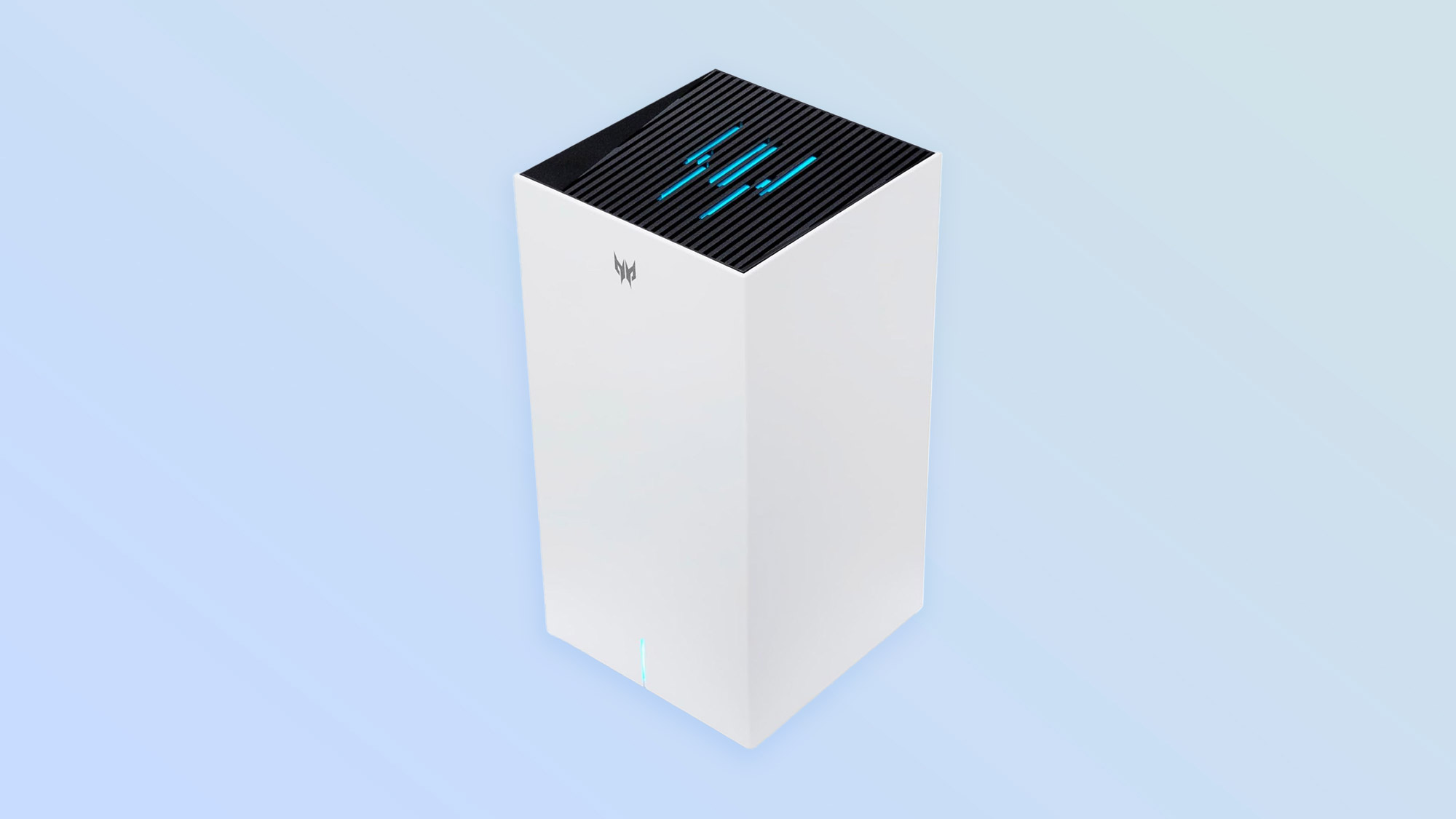
Its power use is on a par with other Wi-Fi 6E and 7 mesh systems at 13.3 watts for the host and 10.1 watts for the node. If they’re left on 24/7, expect to have an annual electricity bill of $32.80 for the two devices if you pay the national average of 16 cents per kilowatt hour. By contrast, the Wi-Fi 6E based Asus ROG Rapture GT6 should cost $38.90 a year using the same criteria.
While banging data packets back and forth, the Predator T7 kept its cool without needing a fan. It hit a peak of 104.7 degrees Fahrenheit during testing.
Acer Predator Connect T7 review: Setup
As is the case with most mesh products, Acer provides the choice of using a connected browser and the Predator Connect app to set it up and make changes; there are versions for iOS and Android. I started by creating an account on my Galaxy S25 phone followed by an email verification.
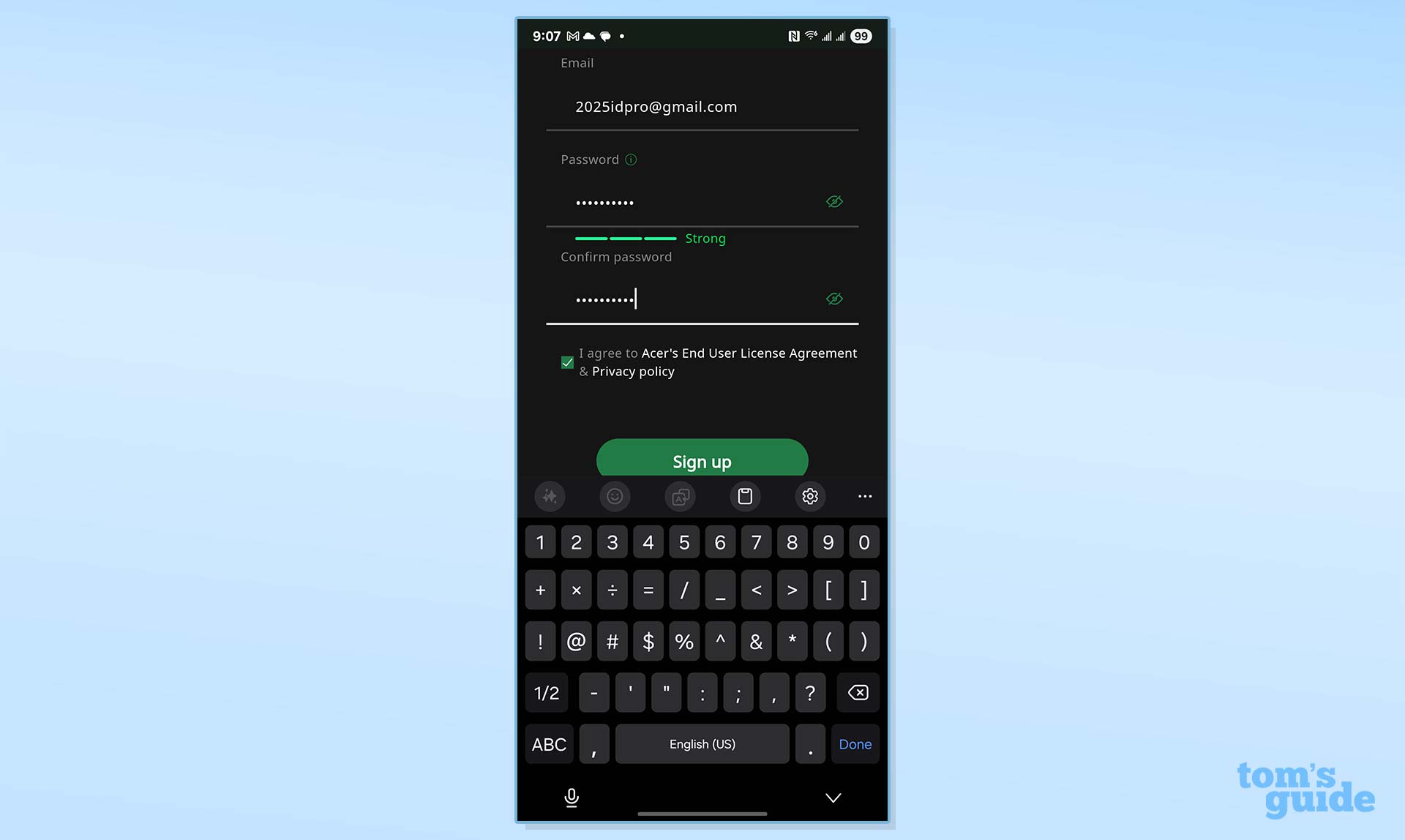
After tapping “+” in the upper right, I picked the Predator T7 from a photo list. The units came pre-paired with the host marked as Controller and the node as Agent.
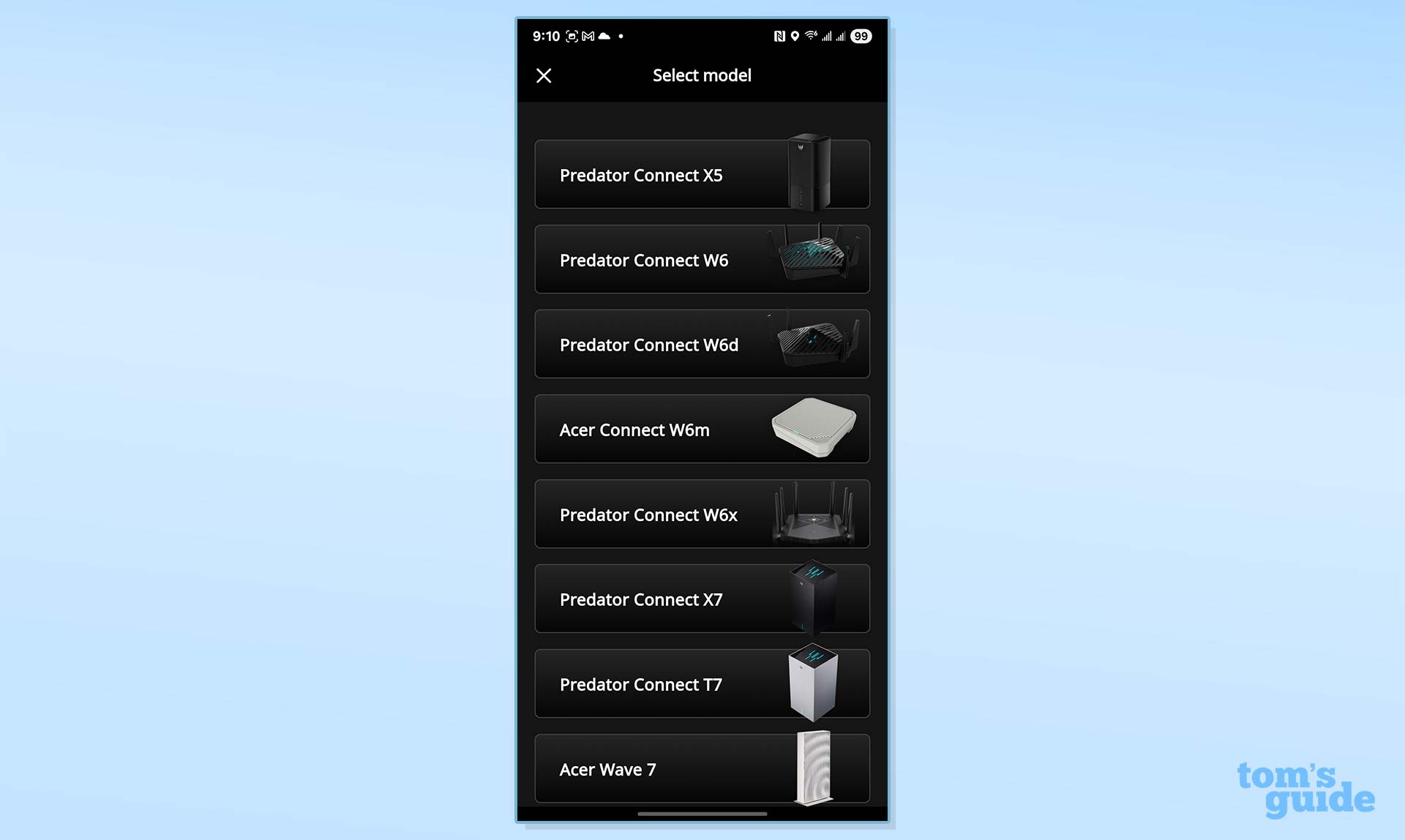
I chose to set it up as a mesh LAN rather than as a standalone router and set the phone to the router’s default network using the info printed underneath.
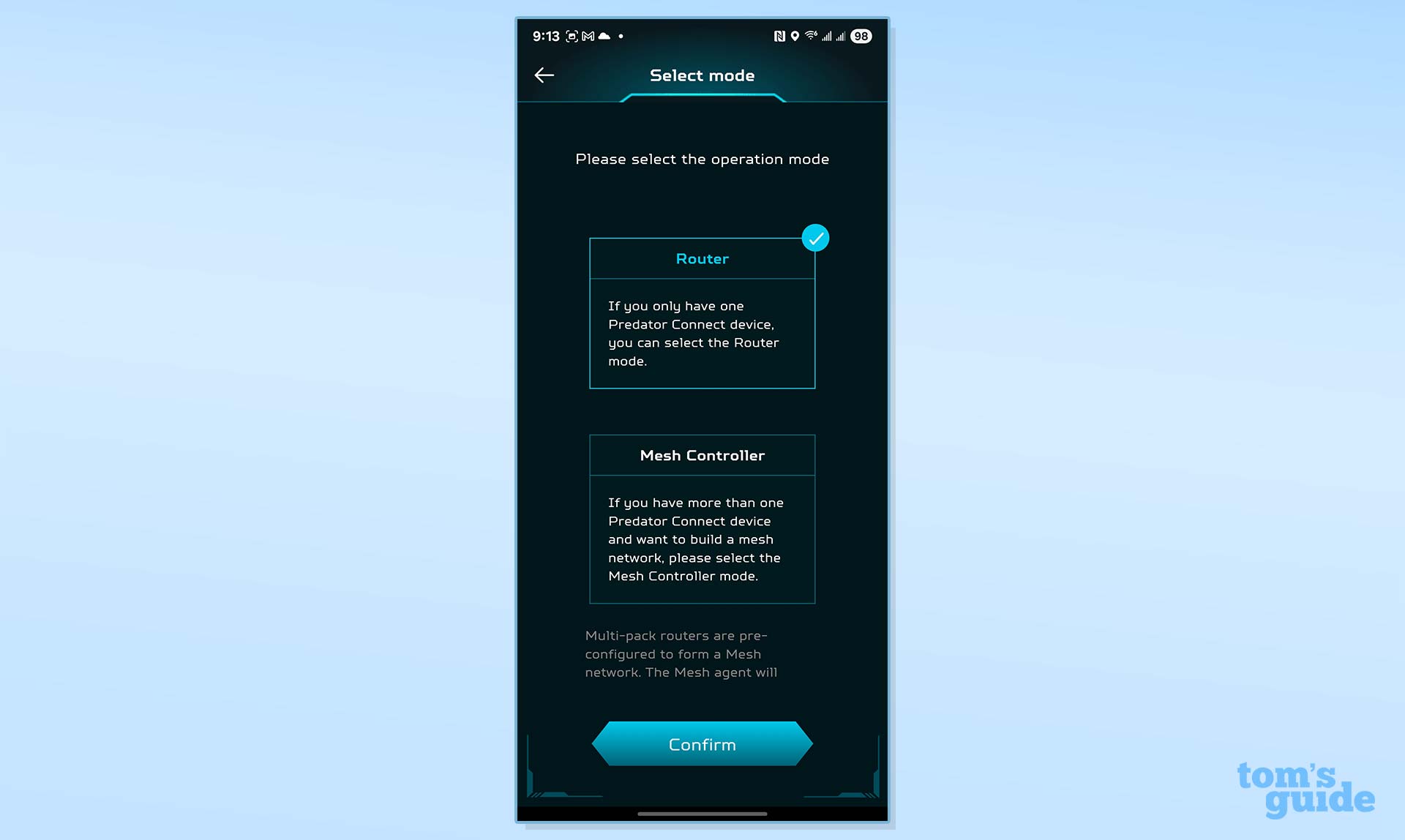
Back at the app, everything was automatically set up in a minute. It took all of 6 minutes and 10 seconds – half the time normally allotted to setting up a mesh network. Unfortunately, the process named the node (oops, Agent) as the “living room”. I later changed it.
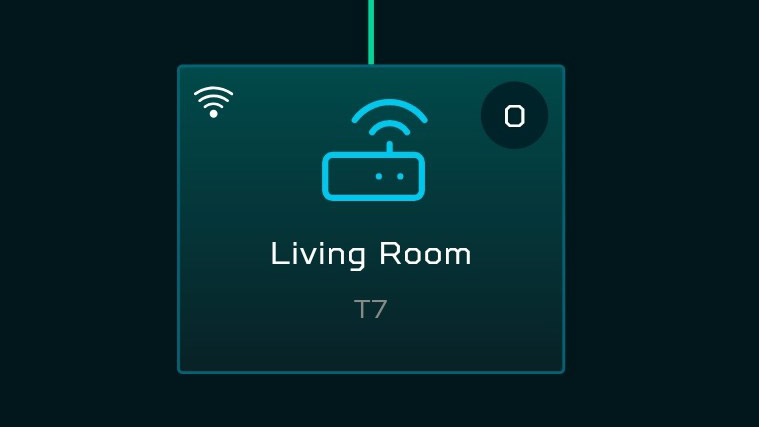
Acer Predator Connect T7 review: Configuration
The Predator T7 can be adjusted and optimized with the app or a connected browser. Using a browser, the system connects easily and zooming out to 50- or 67-percent let me see most of the options without having to squint too much.
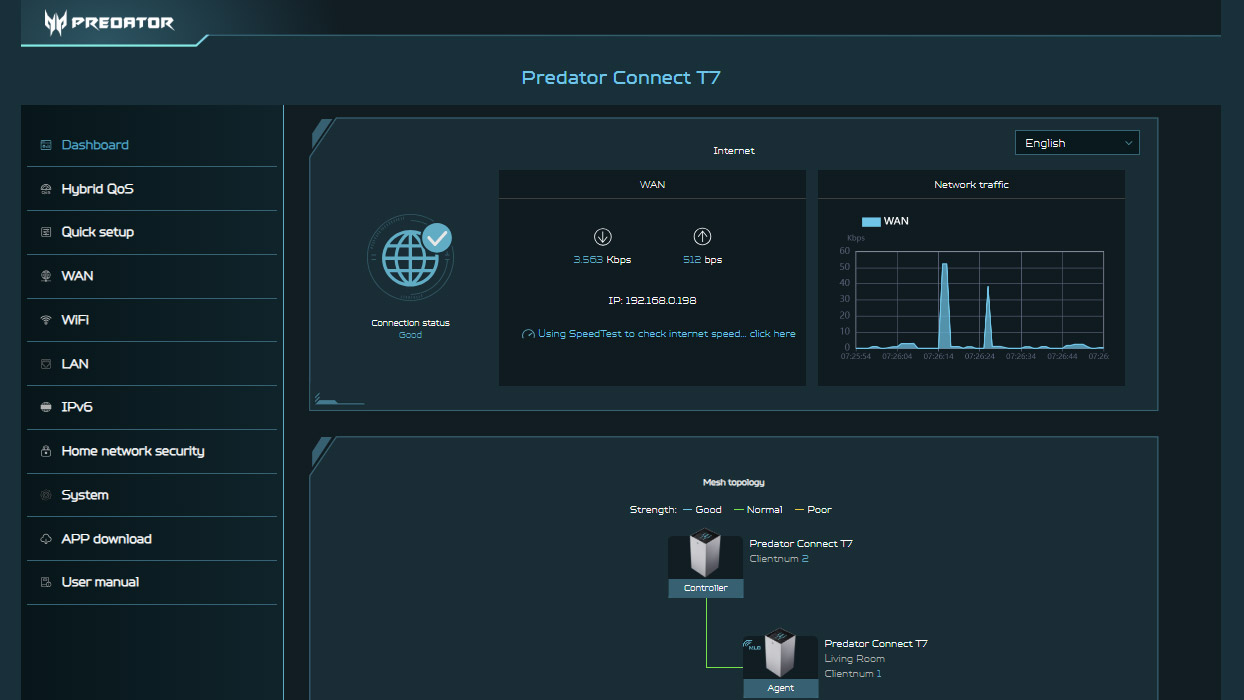
With a dark interface, the Predator T7’s Dashboard shows the must-see items, like whether it’s online, the network topology and current data traffic. It adds a real-time speed indicator.
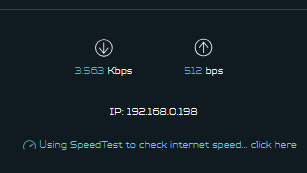
It shows lists of connected clients for the main and guest LANs below as well as how long it’s been online and what wired resources are being used. Along the left are tabs for main categories for the router, including details for using the device’s Hybrid QOS routine.
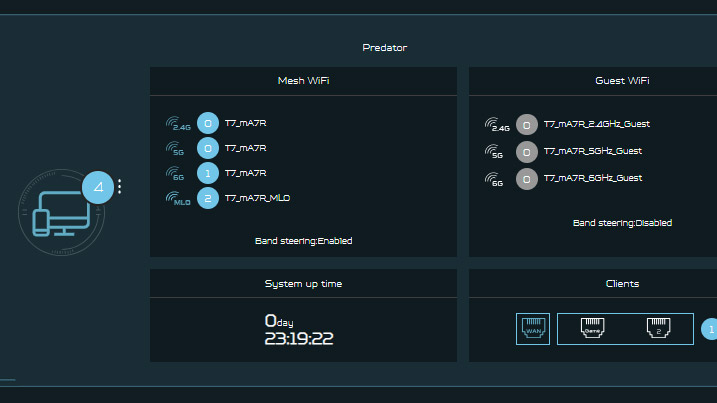
It does the basics well with places to check the WAN settings, change the Wi-Fi network names and passwords as well as repeat the setup. I particularly like the IPV6 configuration choices with Stateful IPV6 or the SLAAC Stateless IPV6 or as a SLAAC Recursive DNS server – something that many expensive routers ignore.

The links to the device’s User Manual and app download QR code are helpful as are the Home Security section’s on/off switches for its protective measures.
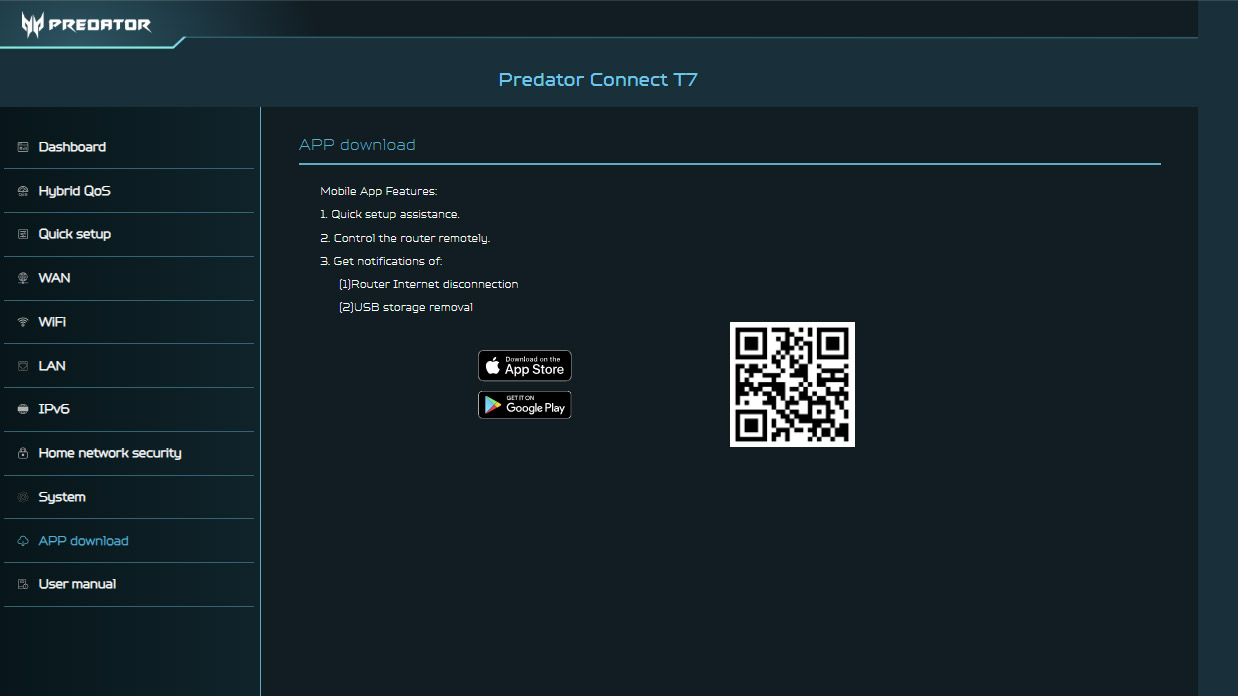
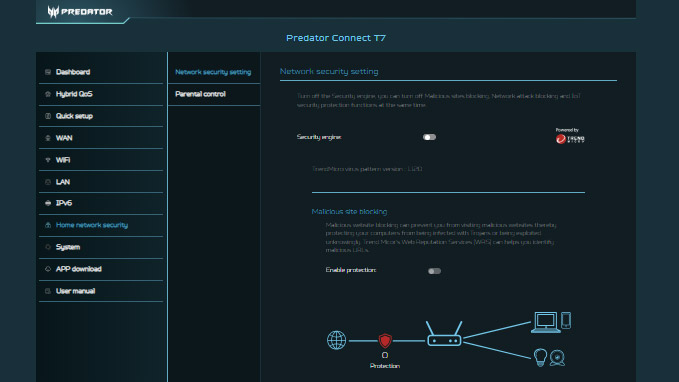
Meanwhile the System link has everything from changing the password to backing up the router’s settings to remotely restarting the device. While the Main LED entry explains the different colors and allowed me to dim them on the router at night, I couldn’t find a way to turn the node’s lights off, however.
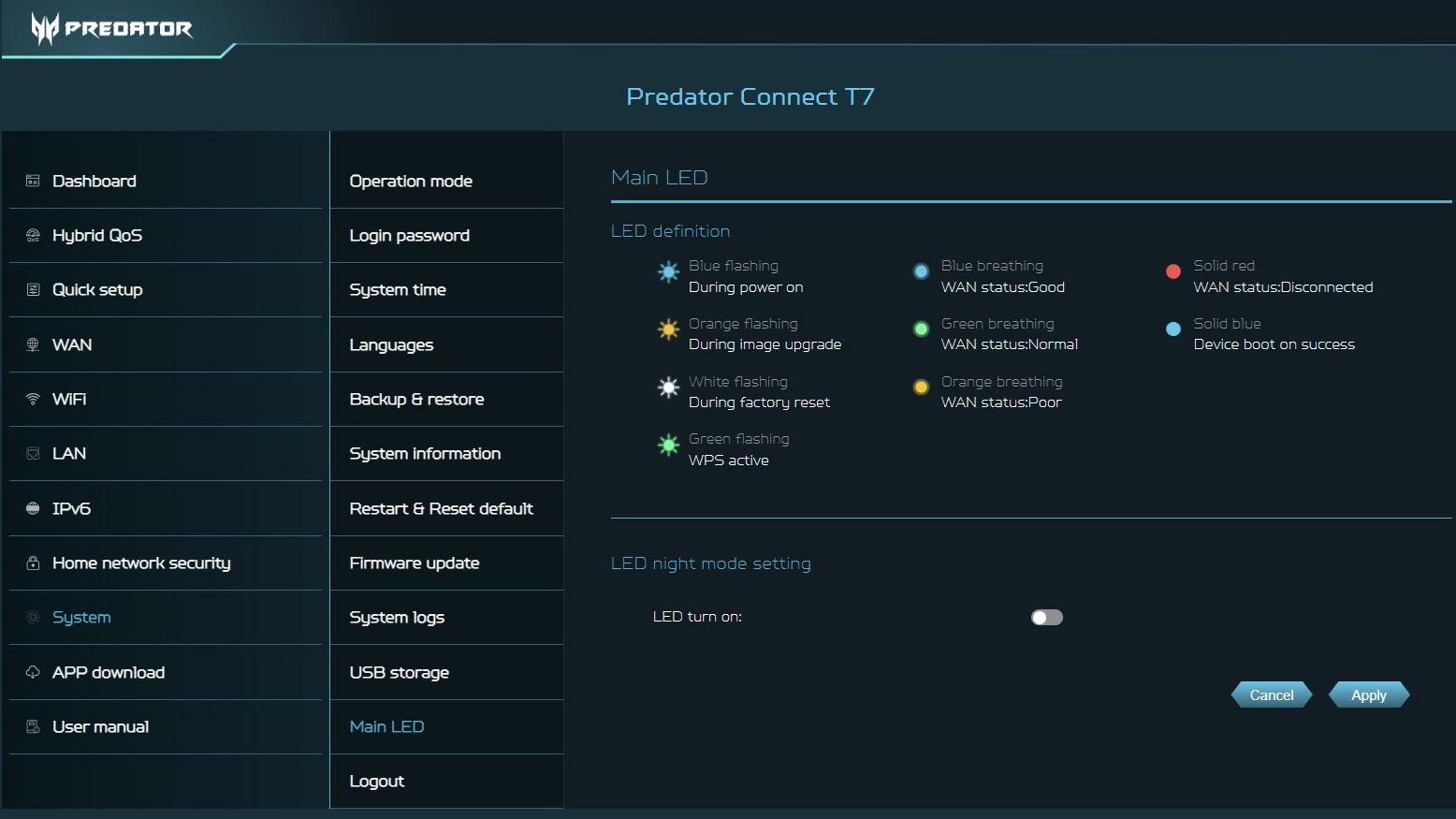
The app’s look and feel is similar but only works in portrait mode, so it’s better for phones than tablets. Just as dark, it’s augmented by photos and illustrations, starting with the My Devices entry page that shows the hardware and if it’s online.
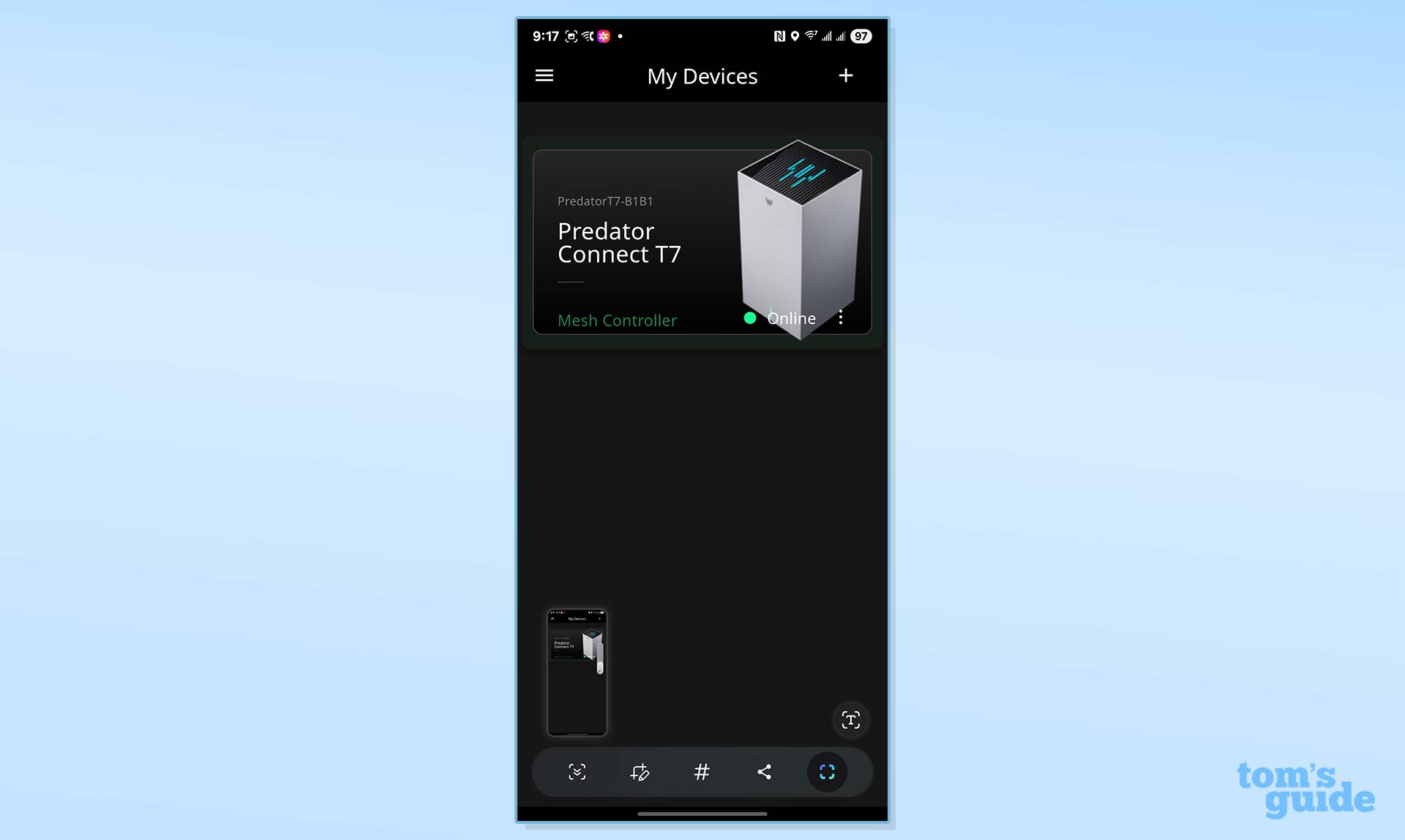
It leads to the LAN map and networking components on the Mesh Wi-Fi page that offers an array of details. Below the surface are the node’s signal strength, changing the backhaul wireless connection. It’s where I found the place to change the node’s name from “living room” to “office’’.
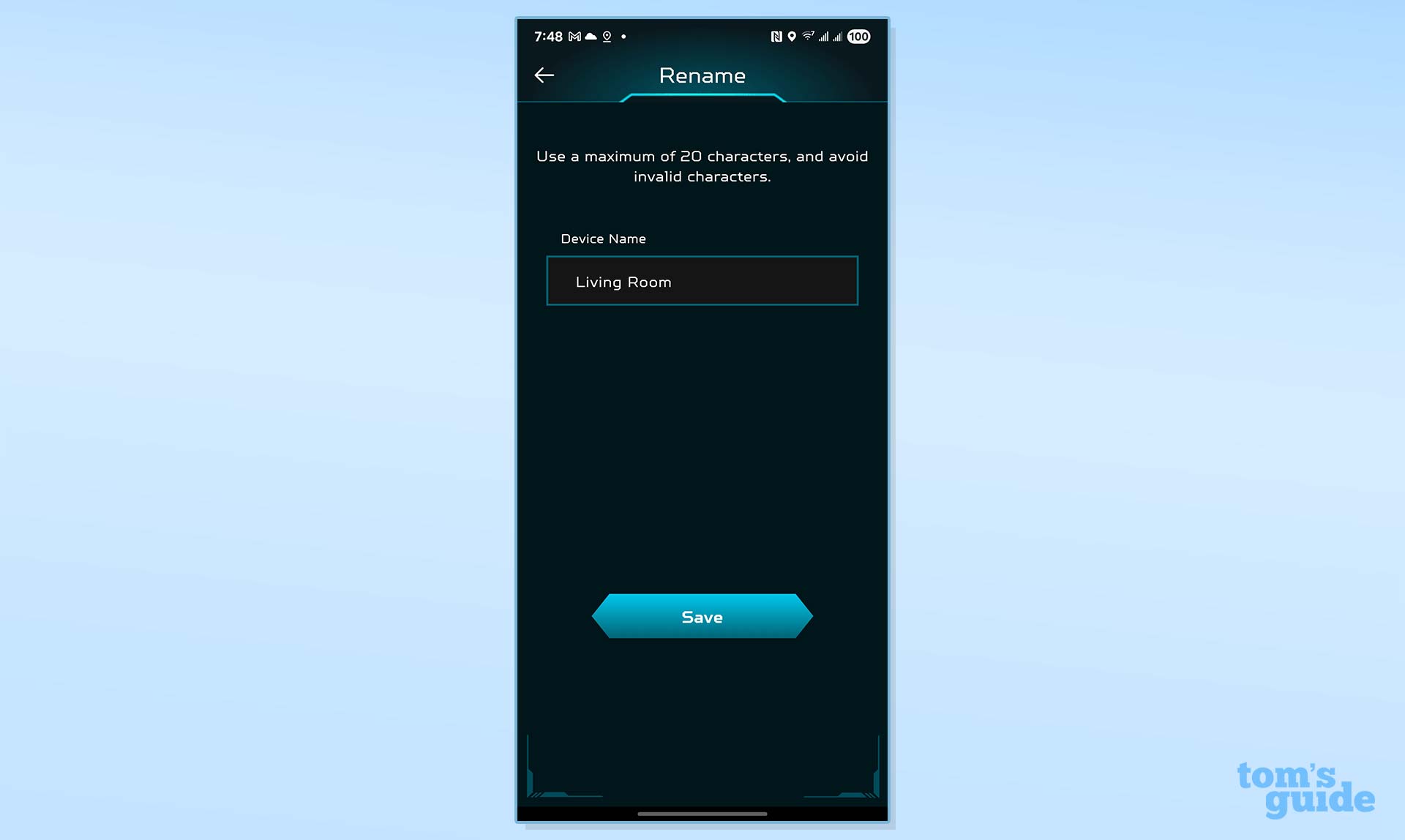
There are three other tabs below for a client list, Boost for using the router’s Network Address Translation acceleration and the Hybrid QOS. The Settings gear on the right mirrors the browser interface with items for Device Information, Firmware Upgrade and using the Trend Micro Security.

Finally, the three line hamburger link in the upper left pulls an auxiliary menu out. It can take you to the My Devices page, change the language and see any pending notifications. There’s a contact section for sending an email to Acer’s support people.
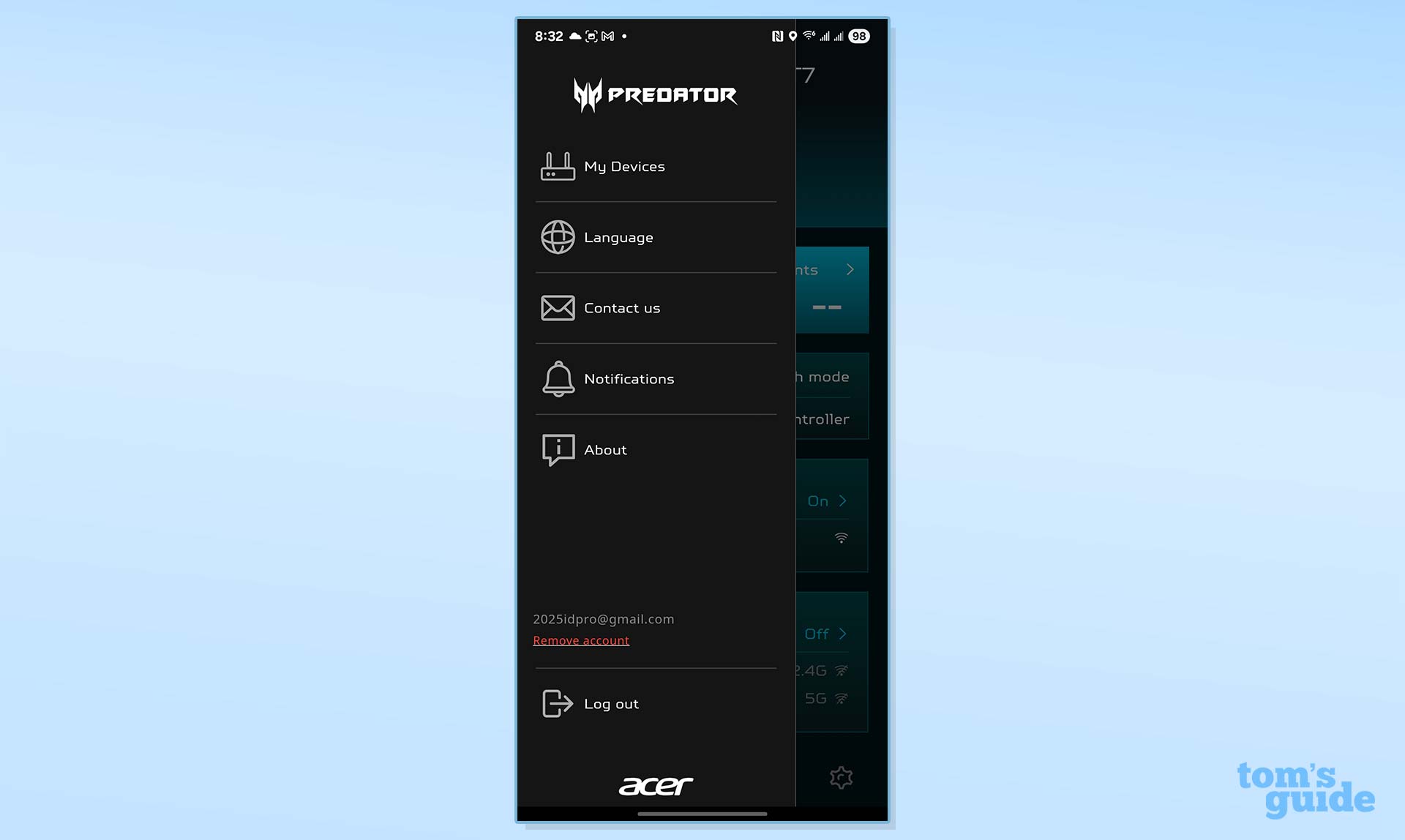
The Predator T7’s one year warranty is standard and adequate but can’t compare with the two years of coverage provided by Asus for their gaming products. Its lifetime support is, however, much better than Netgear’s 90 day policy. The site has a slew of DIY material, from firmware upgrades to setup help to access to the manual.

Acer Predator Connect T7 review: Verdict
It may not have all the gaming bells and whistles that can help turn an online bout into an intergalactic rout, but Acer’s Predator Connect T7 can speed the data flow significantly. Its low latency design is matched by all of Wi-Fi 7’s performance-oriented updates and access to Intel’s Killer Prioritization engine.
For those who are wary of the potential complexity of installing and using a gaming router, the Predator Connect T7’s set up process is just about automatic and one of the quickest mesh installations on the planet. Its easy configuration process can make quick work of tweaking and optimizing the network’s performance. Its use of Trend Micro security to keep the bad guys out is the icing on the online cake.
The result is reasonable performance with good mid-range data flow and excellent range so that it should fill most homes with Wi-Fi. It’s not without qualms, however, because the Predator T7 has only two downstream LAN ports for wired connections and they both max out at 1 Gbps – hardly inspiring for hardcore gamers.
Available one at a time, my advice for small homes or apartments is to get a single Predator T7 and spend the difference on a couple of new games. For now, larger homes will require buying a few Predator T7s one at a time.
Brian Nadel is a freelance writer and editor who specializes in technology reporting and reviewing. He works out of the suburban New York City area and has covered topics from nuclear power plants and Wi-Fi routers to cars and tablets. The former editor-in-chief of Mobile Computing and Communications, Nadel is the recipient of the TransPacific Writing Award.
You must confirm your public display name before commenting
Please logout and then login again, you will then be prompted to enter your display name.


